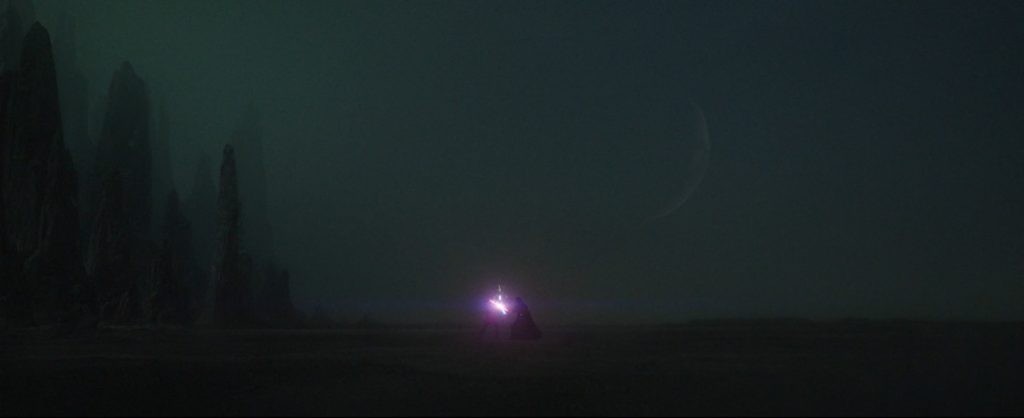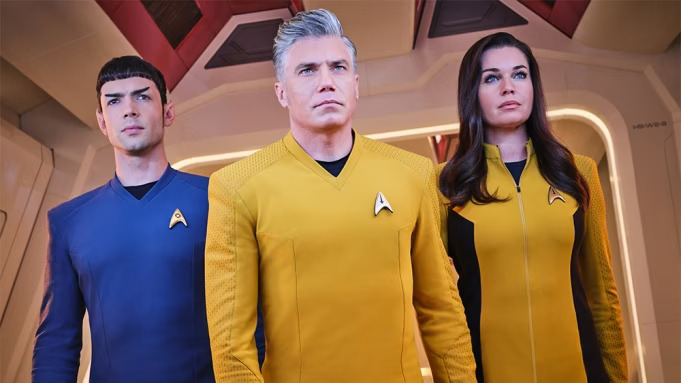Boldly-drawn, indisputably good characters. Unflinching villains with chips on their shoulders. Gruff, well-meaning average joes caught in the middle but willing to take up arms to do what’s right. Laser sword duels that not-so-subtly stand in for philosophical debates. An evil fascist totalitarian Empire. Rescuing the Princess. Mourning for what the villain could’ve been.
For my money, that’s Star Wars. And as much as I’ve enjoyed The Mandalorian, The Last Jedi, and even The Book of Boba Fett, that formula for pure, uncut Star Wars seemed to have been lost to history, relegated to my fond memories of sitting on the floor in my aunt’s house watching a VHS copy of A New Hope on a comparatively tiny tube TV and wondering how those laser swords were somehow “saving light.”
But then came Obi-Wan Kenobi.
A lot of prequels and midquels don’t say anything substantial about the characters or develop their personalities; but this one further improved my understanding of Obi-Wan, Leia, and Vader, while also introducing me to one of the most interesting characters in Star Wars, Third Sister Reva.
It struggled a bit with pacing and a few distractingly brutal scenes in its early episodes. But a show flies or crashes on its finale. And Kenobi’s sixth chapter soars.
To get into it, though, we’re going to have to fly past this here spoiler warning:
Spoiler warning: plot and character details for the entire (first?) season of Obi-Wan Kenobi follow.
The Good
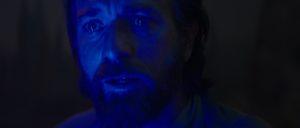 We’ve been following bounty hunters around the galaxy for so long, I almost forgot what a fertile ground for truly good and heroic characters that world is; but Obi-Wan himself, though he certainly fits that bill, is a shadow of his former self when we meet him. Despondent and weak, this Kenobi, it seems, has been living for the past ten years inside the line, “you were my brother, Anakin!”
We’ve been following bounty hunters around the galaxy for so long, I almost forgot what a fertile ground for truly good and heroic characters that world is; but Obi-Wan himself, though he certainly fits that bill, is a shadow of his former self when we meet him. Despondent and weak, this Kenobi, it seems, has been living for the past ten years inside the line, “you were my brother, Anakin!”
Still, even at the start, we see the glimmers of the man he used to be and the one he will become: kind, when he surreptitiously slips a morsel of food away from his work area each day for his eopie. Dedicated, when he looks in on his young charge Luke from a distance. Thoughtful, buying a gift to encourage Luke’s passion when his only real duty is to protect him.
Like the Grand Inquisitor says, “Jedi cannot help what they are. Their compassion leaves a trail.” And though this Jedi’s trail has gone cold, his compassion shines through.
As Kenobi refuses the same call-to-adventure that he’ll one day extend to Luke (“Princess Leia needs your help against the empire!”), we see the cracks in his resolve, in his confidence; but never in his inherent goodness. Like Jesus in the Garden of Gethsemane, he’s haunted by the sin of his world and the pain that means for him. And like Jesus, Kenobi eventually embarks on that momentous mission.
He’s not the only absolutely good character on Tatooine, of course; Luke’s famous Uncle Owen is living a quiet life on the farm, but he’s willing to stop at nothing to keep his family safe. He doesn’t balk at Reva’s surprise that he’s taking care of Luke as his own child—”he is my own.” He may be gruff, but his reluctance to allow Luke out of his sight in A New Hope takes on a new dimension of heroism in this show.
There are more, too. Leia’s adopted parents, Bail and Breha Organa. Roken, the man who led the convoy of Jedi refugees. The rebel pilot Wade. They’re all indisputably good, but none of them are certain all of the time; they’re reminders that nobody has to be right all the time, or completely confident, or undaunted by past wounds in order to help, because heroism is doing what’s right despite the pain.
The Bad
 If the heroes of Obi-Wan Kenobi are uncertain and wounded, the villains are driven by absolute conviction. Canon issues aside, seeing another confrontation between Obi-Wan and his dearest enemy was not only heartbreaking but illuminating. We know what will happen to Anakin Skywalker over the next twenty years of his life; but the weight of their prior friendship and the pain Kenobi has been feeling since it was broken give it a different gravity.
If the heroes of Obi-Wan Kenobi are uncertain and wounded, the villains are driven by absolute conviction. Canon issues aside, seeing another confrontation between Obi-Wan and his dearest enemy was not only heartbreaking but illuminating. We know what will happen to Anakin Skywalker over the next twenty years of his life; but the weight of their prior friendship and the pain Kenobi has been feeling since it was broken give it a different gravity.
“What have you become?” Obi-Wan asks. But the answer stands before him. A half-man. A broken man. A robotic shell of a once-great Jedi. He’s not asking what. He’s asking how. And that’s exactly what Darth Vader replies:
“I am what you made me.”
We aren’t culpable for the evil of others, but our sin does have deeper effects than even we can know. When we harm those we’re supposed to help, we visit even more pain on them than their need already has. Their further evil actions aren’t our fault, but our sin takes on a different dimension when the wounds we inflict grow into something more vile.
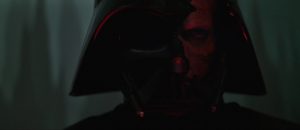 The Jedi, and Obi-Wan in particular, made Darth Vader a hundred times over; when they told him that his love for Padme was forbidden, when they told him he would not be able to do what was right, when they insisted that the man who promised to save Padme’s life was the real villain. And when Kenobi himself, Anakin’s dearest friend, left Anakin for dead on the molten surface of Mustafar where Vader overrode every trace of what Anakin was. “Anakin is gone. I am what remains.”
The Jedi, and Obi-Wan in particular, made Darth Vader a hundred times over; when they told him that his love for Padme was forbidden, when they told him he would not be able to do what was right, when they insisted that the man who promised to save Padme’s life was the real villain. And when Kenobi himself, Anakin’s dearest friend, left Anakin for dead on the molten surface of Mustafar where Vader overrode every trace of what Anakin was. “Anakin is gone. I am what remains.”
Vader tells Obi-Wan, “I am not your failure…You didn’t kill Anakin Skywalker. I did.” Which is a half-truth, since at each step, the Jedi could have bound up Anakin’s wounds, and they instead pushed him away; giving rise to Darth Vader, the manifestation of Anakin’s vengeance.
And as the Grand Inquisitor later points out, “revenge does wonders for the will to live.”
The Redeemable
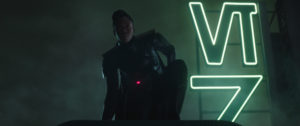 On the other end of the coin, deciding to live for something life-giving is a catharsis that can totally remake a person. Tala discovered that her work as an Imperial officer was causing too much harm, and devoted herself to helping Force-sensitive people escape. Haja Estree decided to leave his life as a con man and instead help the refugees he had once conned.
On the other end of the coin, deciding to live for something life-giving is a catharsis that can totally remake a person. Tala discovered that her work as an Imperial officer was causing too much harm, and devoted herself to helping Force-sensitive people escape. Haja Estree decided to leave his life as a con man and instead help the refugees he had once conned.
But the story of Obi-Wan Kenobi was as much a story about the title character and his greatest nemesis as it was about Third Sister Reva.
Reva’s storyline is heartbreaking and uplifting, a microcosmic echo of Anakin’s own. She too was failed by the Jedi. She too felt betrayed by Obi-Wan. She used those wounds and devoted herself to vengeance, only to be saved from her self-destruction and evil when she refused to kill Luke Skywalker.
In her, Obi-Wan can see the possible redemption of his old friend; he couldn’t save Anakin. But he could save Reva. And that moment of catharsis, when she lets go her old wounds, her evil no longer defines her. She has chosen the more difficult path: the path to redemption.
Reva has a lot of repentance to do. The pain she’s caused can never truly be expunged from the galaxy. She may face deep consequences for her evil. If Obi-Wan Kenobi gets a second season, we may get to see her do something that Vader never did: repent of her evil over the course of years, instead of minutes.
But her redemption shows Obi-Wan that it is possible for Anakin. And perhaps it also shows that it is possible for you.

